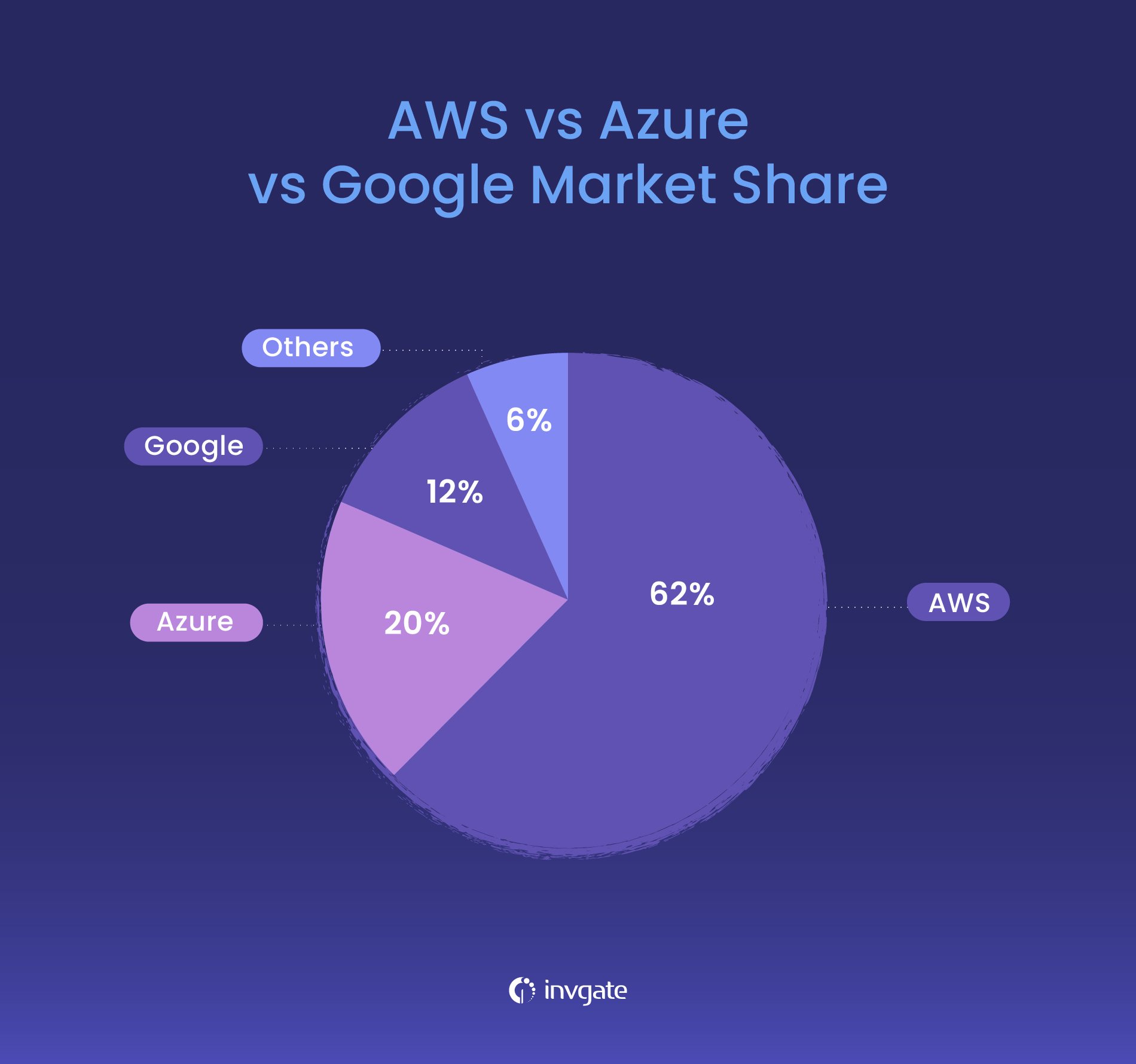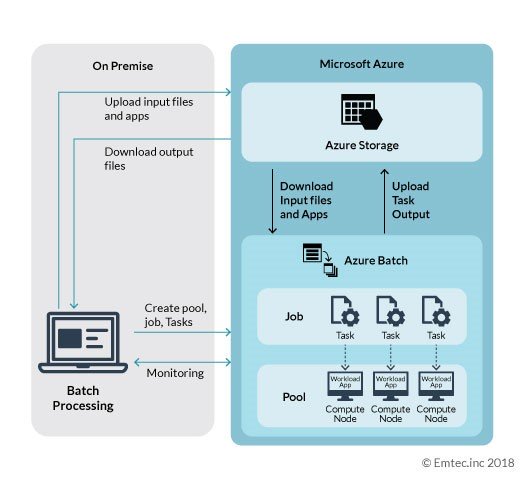Demystifying Azure Batch: An Introduction
Azure Batch is a powerful cloud-based service offered by Microsoft Azure, designed to help organizations manage and process large-scale computing tasks efficiently. The service simplifies the process of managing and orchestrating resource-intensive tasks, enabling businesses to optimize their workloads and reduce operational costs. So, what is Azure Batch, and why is it essential in the cloud computing landscape?
Key Features and Benefits of Azure Batch
Azure Batch is a robust and feature-rich cloud-based service that offers numerous advantages to businesses looking to manage large-scale computing tasks efficiently. Some of the key features and benefits of Azure Batch include:
- Automated batch processing: Azure Batch automates the process of managing and executing large-scale computing tasks, freeing up valuable time and resources for organizations.
- Flexible resource management: Azure Batch allows users to scale their resources up or down based on demand, ensuring optimal performance and cost-efficiency.
- Seamless integration with other Azure services: Azure Batch integrates seamlessly with other Azure services, enabling users to create end-to-end workflows and solutions with ease.
- Efficient parallel computing: Azure Batch supports parallel computing, allowing users to process multiple tasks simultaneously, significantly reducing processing times and accelerating time-to-market.
- Cost-effective: By leveraging Azure Batch, businesses can reduce their operational costs by avoiding the need to invest in and maintain expensive on-premises infrastructure.
- Reliable and secure: Azure Batch is built on Microsoft’s proven cloud infrastructure, ensuring high availability, reliability, and robust security measures to protect sensitive data and workloads.
By taking advantage of these features and benefits, businesses can optimize their workloads, streamline their workflows, and achieve better results with Azure Batch.
How to Leverage Azure Batch for Large-Scale Computing Tasks
To get started with Azure Batch, follow these steps to create an account, configure pools, and submit jobs:
- Create an Azure Batch account: Log in to the Azure portal, and create a new Batch account. Provide the necessary details, such as the subscription, resource group, and location. Ensure that you select the appropriate pricing tier based on your requirements.
- Configure pools: A pool is a collection of compute nodes that are used to run your tasks. Define a new pool by specifying the virtual machine size, operating system, and number of nodes. You can also configure auto-scaling rules to scale the pool up or down based on demand.
- Create a job: A job is a collection of tasks that share the same settings and constraints. Define a new job by specifying the pool, job manager, and task settings. You can also customize the task scheduling policy and priority.
- Add tasks: Add tasks to the job by specifying the command line, environment variables, and task constraints. You can also upload input files and specify output directories for each task.
- Monitor progress: Monitor the progress of your jobs and tasks using the Azure portal or Azure Batch APIs. You can view the status, progress, and logs for each task, as well as the overall job status.
By following these steps, you can leverage Azure Batch to manage and execute large-scale computing tasks efficiently. Examples and screenshots can be added to enhance understanding and provide a more engaging experience for the reader.
Azure Batch Use Cases: Real-World Applications
Azure Batch has been successfully implemented in various industries to streamline workflows and achieve better results. Some real-world use cases of Azure Batch include:
- Scientific research: Azure Batch has been used in scientific research to process large-scale data sets and simulations. For example, the University of Cambridge used Azure Batch to run complex climate simulations, reducing processing times from weeks to hours.
- Media processing: Azure Batch has been used in media processing to encode and render video and audio content. For instance, a media company used Azure Batch to encode and process thousands of video files, reducing encoding times by 75%.
- Machine learning: Azure Batch has been used in machine learning to train and deploy machine learning models. For example, a software company used Azure Batch to train machine learning models, reducing training times from days to hours.
- Financial services: Azure Batch has been used in financial services to perform risk analysis and simulations. For instance, a financial institution used Azure Batch to perform complex risk simulations, reducing processing times from days to hours.
These use cases demonstrate the versatility and power of Azure Batch in managing and processing large-scale computing tasks efficiently. By implementing Azure Batch, organizations can streamline their workflows, reduce operational costs, and achieve better results.
Azure Batch vs. Other Cloud-Based Solutions: A Comparative Analysis
When it comes to managing and processing large-scale computing tasks, organizations have several cloud-based solutions to choose from, including Azure Batch, AWS Batch, and Google Cloud Batch. To help potential users make informed decisions, it’s essential to compare the key features, pricing, and performance of these solutions.
- Key features: Azure Batch offers automated batch processing, flexible resource management, and seamless integration with other Azure services. AWS Batch provides similar features, as well as support for containerized applications. Google Cloud Batch offers automated batch processing, flexible resource management, and integration with Google Cloud services.
- Pricing: Azure Batch charges users based on the number of virtual machines and core hours used. AWS Batch charges users based on the number of instances and core hours used. Google Cloud Batch charges users based on the number of nodes and core hours used.
- Performance: Azure Batch offers high performance and scalability, with the ability to handle large-scale computing tasks efficiently. AWS Batch and Google Cloud Batch also offer high performance and scalability, but may have limitations when it comes to handling very large-scale computing tasks.
Ultimately, the choice between Azure Batch, AWS Batch, and Google Cloud Batch will depend on the specific needs and requirements of the organization. By analyzing the key features, pricing, and performance of these solutions, potential users can make informed decisions and choose the solution that best meets their needs.
Optimizing Azure Batch: Best Practices and Tips
To get the most out of Azure Batch and optimize performance, users should follow best practices and tips, such as choosing the right virtual machine size, configuring auto-scaling, and monitoring job progress. Here are some strategies to help users maximize their ROI and improve overall efficiency:
- Choosing the right virtual machine size: Azure Batch offers a variety of virtual machine sizes, each with different compute capabilities and costs. Users should choose the right virtual machine size based on their specific workload requirements. For example, users running memory-intensive workloads should choose virtual machines with higher memory, while users running CPU-intensive workloads should choose virtual machines with higher CPU cores.
- Configuring auto-scaling: Azure Batch allows users to configure auto-scaling rules based on their specific workload requirements. Users should configure auto-scaling rules to ensure that they have enough resources to handle peak workloads, while also minimizing costs during periods of low demand. For example, users can configure auto-scaling rules to add or remove virtual machines based on the number of active tasks or the amount of available memory.
- Monitoring job progress: Azure Batch provides tools for monitoring job progress, such as the Azure Batch Explorer and Azure Monitor. Users should monitor job progress to ensure that their workloads are running efficiently and to identify any potential issues. For example, users can monitor the status of tasks, view logs, and set up alerts for specific events.
By following these best practices and tips, users can optimize Azure Batch performance, maximize their ROI, and improve overall efficiency. It’s important to note that these strategies may vary depending on the specific workload requirements and industry use cases.
Azure Batch Pricing and Billing: Understanding the Cost Structure
Azure Batch pricing is based on the number of virtual machines and core hours used, as well as the storage and network usage. To help users understand the cost structure and avoid unexpected charges, here’s a breakdown of how Azure Batch pricing works:
- Virtual machines: Users are charged for the virtual machines they use in their Azure Batch account. The cost of virtual machines depends on the virtual machine size, region, and usage time. Users can choose from a variety of virtual machine sizes, ranging from low-cost, low-memory virtual machines to high-performance, high-memory virtual machines.
- Core hours: Users are charged for the number of core hours they use in their Azure Batch account. A core hour is defined as the use of one core for one hour. Users can choose from a variety of virtual machine sizes with different core counts, ranging from one core to hundreds of cores.
- Storage: Users are charged for the amount of storage they use in their Azure Batch account. The cost of storage depends on the storage type, region, and usage time. Users can choose from a variety of storage options, including Azure Blob Storage, Azure Files, and Azure Disk Storage.
- Network: Users are charged for the amount of network traffic they use in their Azure Batch account. The cost of network traffic depends on the region, data transfer direction, and data transfer amount. Users can choose from a variety of network options, including Azure Virtual Network, Azure ExpressRoute, and Azure VPN Gateway.
To minimize costs and avoid unexpected charges, users should follow best practices, such as choosing the right virtual machine size, configuring auto-scaling, and monitoring usage. Users can also take advantage of Azure Batch features, such as spot instances and low-priority virtual machines, to reduce costs and improve efficiency.
Securing Azure Batch: Implementing Robust Security Measures
Security is a top priority for organizations that use cloud-based services for managing and processing large-scale computing tasks. Azure Batch provides several security features to help users protect their data and maintain a secure computing environment in the cloud. Here are some best practices and tips for securing Azure Batch:
- Enable multi-factor authentication: Multi-factor authentication adds an extra layer of security to user accounts by requiring users to provide a second form of authentication, such as a phone call, text message, or authentication app. Users can enable multi-factor authentication for their Azure Batch account in the Azure portal.
- Configure network security: Azure Batch allows users to configure network security rules to control access to their computing resources. Users can create network security groups and apply them to their Azure Batch account, pools, and jobs to restrict access to specific IP addresses or ranges.
- Manage access control: Azure Batch provides several access control features, such as role-based access control (RBAC) and Azure Active Directory (Azure AD), to help users manage access to their computing resources. Users can assign roles and permissions to specific users or groups, and use Azure AD to authenticate and authorize access to their Azure Batch resources.
- Encrypt data: Azure Batch supports data encryption at rest and in transit. Users can encrypt their data using Azure Storage Service Encryption (SSE) or Azure Disk Encryption (ADE) to protect their data from unauthorized access or theft.
- Monitor security events: Azure Batch provides several monitoring and logging features, such as Azure Monitor and Azure Log Analytics, to help users detect and respond to security events. Users can monitor security events, such as failed login attempts or unusual network activity, and set up alerts to notify them of potential security threats.
By following these best practices and tips, users can ensure the security and integrity of their Azure Batch resources and maintain a secure computing environment in the cloud. It’s important to note that these strategies may vary depending on the specific workload requirements and industry use cases.






